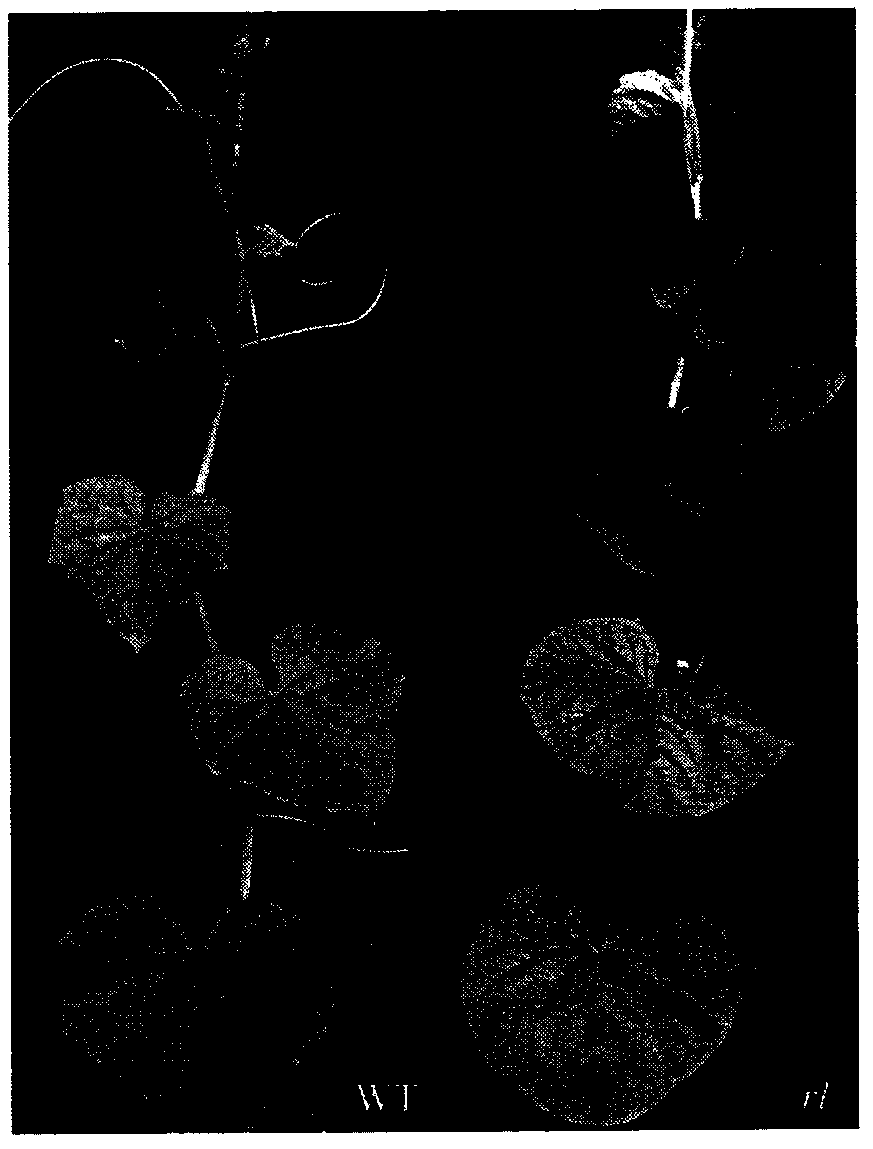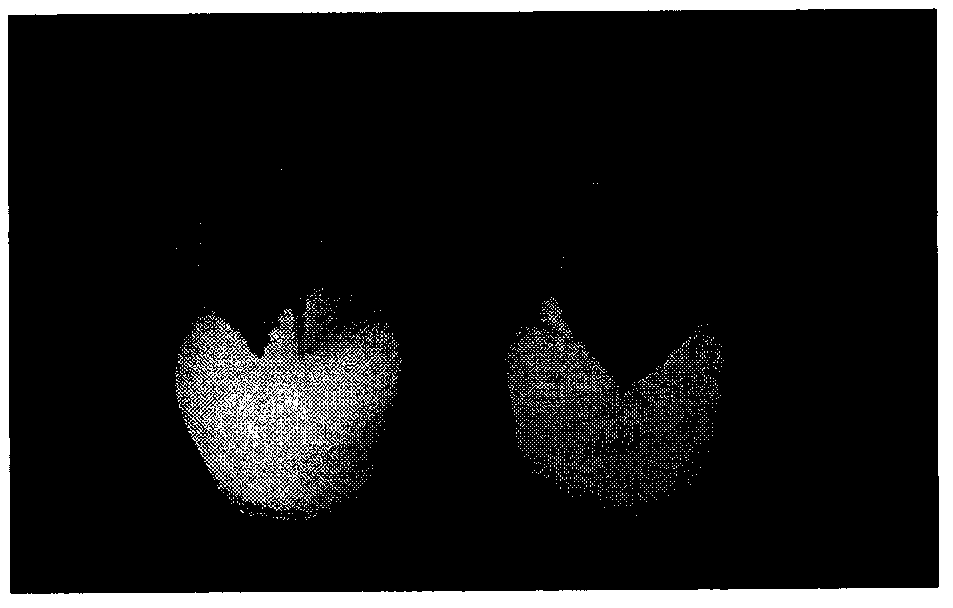Associated protein for regulating and controlling round-leaf characteristics of cucumbers as well as coding gene thereof and application thereof
A technology related to protein and round leaves, applied in the field of molecular genetics and breeding, can solve the problem of cucumber leaf shape change and other problems
- Summary
- Abstract
- Description
- Claims
- Application Information
AI Technical Summary
Problems solved by technology
Method used
Image
Examples
Embodiment 1
[0020] Phenotype and genetic analysis of embodiment 1 mutant
[0021] A cucumber round-leaf mutant rl was screened from the Changchun Mici mutant library induced by EMS (ethyl methane sulfonate). The mutant showed round leaves at the early stage of development, no calyx in both male and female flowers, sterile female flowers, asymmetric development of cotyledons (three cotyledons are the most common phenotype) and abnormal root development.
[0022] The mutant r1 was used as the male parent, and it was crossed with the wild-type Micila vinifera to obtain F1 plants of the first generation, and all F1 offspring had wild-type phenotypes. Since the homozygous r1 mutant plants are female sterile, wild-type plants (RLRL or RLr1) and mutant plants (rlr1) from the F2 generation of crosses between r1 mutants and WT wild-type were counted in 78 Only 24 plants in the F2 population of plants exhibited the round leaf phenotype, with a segregation ratio of 3:1 (χ 2 =0.19, P=0.66), indicat...
Embodiment 2
[0023] Embodiment 2 Location of CsPID gene
[0024]The round leaf mutant and wild-type leaf DNA of the F2 segregation population was extracted by conventional method-CTAB method. The DNA mixing pool was crushed to 150bp-250bp with an ultrasonic breaker, and the whole genome resequencing was performed on the small fragment DNA library constructed based on the Illumina HiSEQ 2500 sequencing platform. After removing low-quality reads through quality control, use BWA (version: 0.5.9rc1) and SAMtools software (version: 0.1.19) to compare the data with the cucumber genome sequence (“9930” reference genome), and divide the number of SNPs Calculate the allele index based on the sequencing depth of this site. The same SNP was screened out in the two mixed pools, and the corresponding allele index was subtracted to calculate the Δallele index. The same method was used to randomly perform high-throughput sequencing on a single wild-type Myacina changchun plant, and the SNP sites betwee...
Embodiment 3
[0025] Example 3 CsPID gene cloning and identification
[0026] The CsPID gene mutation is located at the second exon 1092bp of Csa1M537400, and the base G is mutated to A. In order to verify the sequencing results, the cDNA of the gene numbered Csa1M537400 in the Cucurbit Genomics Database was sequenced, and it was confirmed that the original guanine (G) of the cDNA in the coding region was mutated to adenine (A), resulting in the mutation of the encoded V (valine) to M (methionine), consistent with the sequencing results, confirmed that the mutation of this gene resulted in the production of a round-leaved calyx-less mutant, and the gene was named CsPID.
[0027] Obtaining the full-length cDNA of CsPID gene:
[0028] The total RNA of Cucumber radix and round leaves was extracted using TRIzol method, and DNA was digested at 25°C for 30 minutes, and 2 mg of total RNA was extracted as a template using the reverse transcription kit PrimeScript from TaKaRa Company TM RTreagent...
PUM
 Login to View More
Login to View More Abstract
Description
Claims
Application Information
 Login to View More
Login to View More - R&D
- Intellectual Property
- Life Sciences
- Materials
- Tech Scout
- Unparalleled Data Quality
- Higher Quality Content
- 60% Fewer Hallucinations
Browse by: Latest US Patents, China's latest patents, Technical Efficacy Thesaurus, Application Domain, Technology Topic, Popular Technical Reports.
© 2025 PatSnap. All rights reserved.Legal|Privacy policy|Modern Slavery Act Transparency Statement|Sitemap|About US| Contact US: help@patsnap.com



